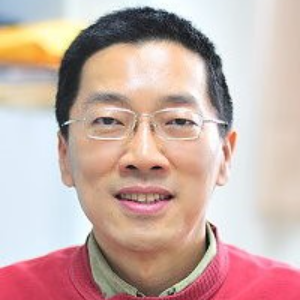Title : Enhanced hydrogen and oxygen evolution reactions utilizing pure plasmon-activated water
Abstract:
To resolve the growing issue of global environmental pollution and meet the goal of reducing carbon emissions, renewable fuels, such as hydrogen, are being considered as green energy sources. Utilizing electrochemical hydrogen evolution reactions (HERs) to split water is the most commonly employed method to prepare hydrogen for renewable energy. In HERs without a catalyst, the reaction efficiency is low because of the inability to activate one of the most important steps of the reaction, the breaking of O–H bonds during the dissociation of H2O. This relatively large energetic barrier can be easily overcome by utilizing expensive commercial catalysts, like platinum (Pt) and palladium (Pd), to facilitate the dissociation of water. At present, the most common approaches for HERs have focused on cheap, earth-abundant catalysts with different chemical compositions and structures. The efficiencies based on the developed catalysts are compared to Pt-based HERs to evaluate the corresponding performances. On the other hand, oxygen evolution reactions (OERs) are an oxidation process for preparing oxygen by water electrolysis, which represents an efficient and clean technology for energy conversion and storage. Although we know that the activity of water critically depends on dynamic hydrogen bonds (HBs) among its molecules, the known properties of water are always based on inert bulk water with strong HBs. That is because we are still not very clear about the detailed structure of water molecules at the molecular level. Moreover, the effects of HBs of reactant water in HERs and OERs on the corresponding reaction efficiency are less understood and discussed. In this work, we propose an alternative strategy for OERs and HERs, focusing on water itself, utilizing Au-free condensed water (PAW-C) from heated trace Au-containing plasmon-activated water (PAW). Compared to active PAW, the electron-doping structure of PAW-C was reduced, while the degree of reduced hydrogen bonds (HBs) in PAW-C was enhanced. Encouragingly, compared to deionized water (DIW)-based 0.1 M KOH solutions, the measured current densities of OERs on a catalytic Pt electrode were significantly higher by average magnitudes of 45% and 23% for the PAW-C-based and PAW-based 0.1 M KOH solutions, respectively. Compared to the DIW-based 0.1 M H2SO4 solution, the measured current density of HER on a catalytic Pt electrode was significantly higher by an average magnitude of 20% for the PAW-C-based 0.1 M H2SO4 solution (an average higher magnitude of 15% for the PAW-based solution). Moreover, this proposed strategy was applicable to inert carbon and stainless steel electrodes for OERs.
Audience Take Away:
- Enhanced hydrogen and oxygen evolution reactions utilizing active pure PAW water
- The proposed strategy being applicable to inert and catalytic electrodes for OERs
- Active and stable PAW-C as a green solvent applicable to more-effective OERs and HERs



